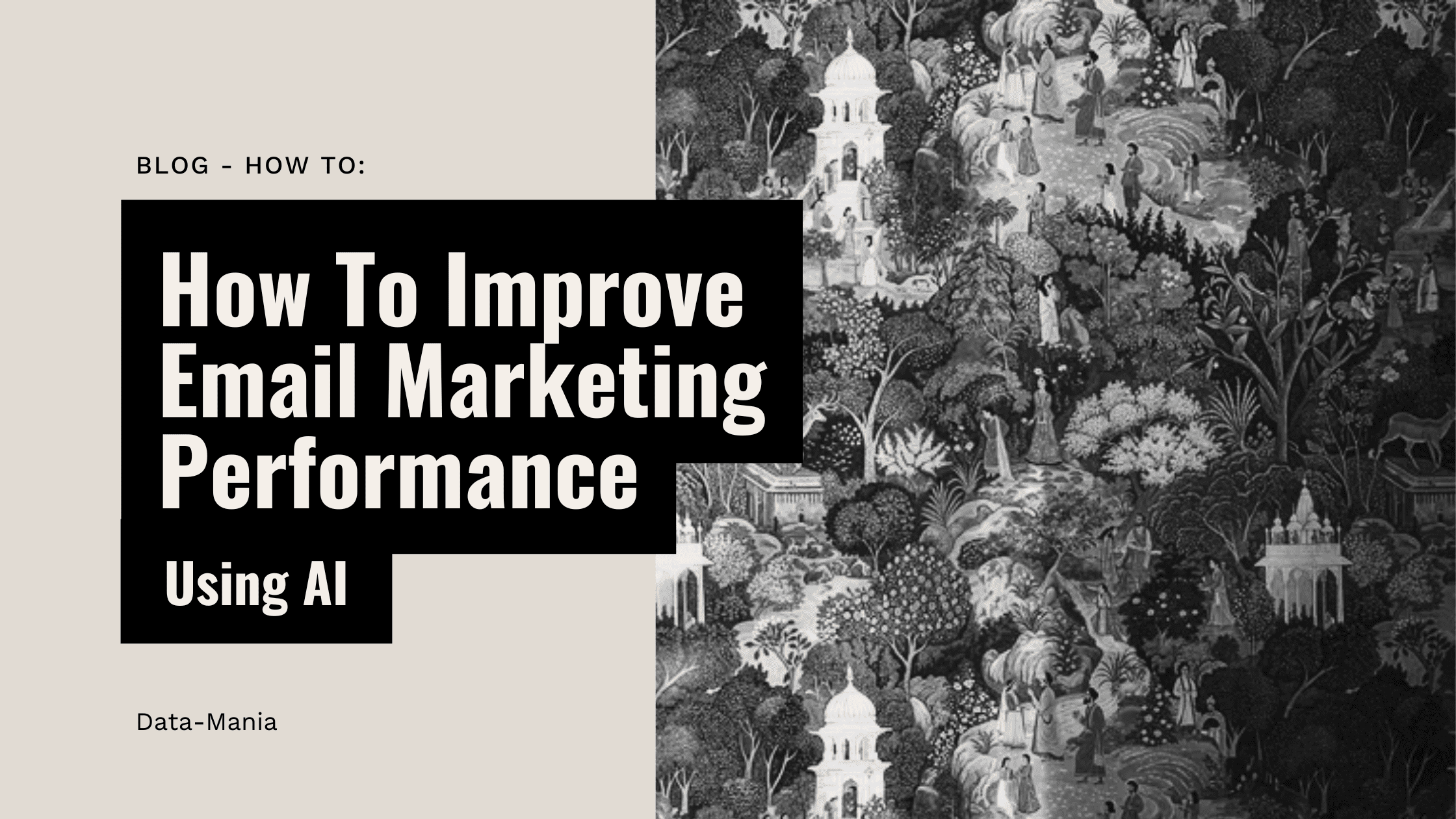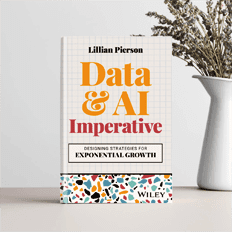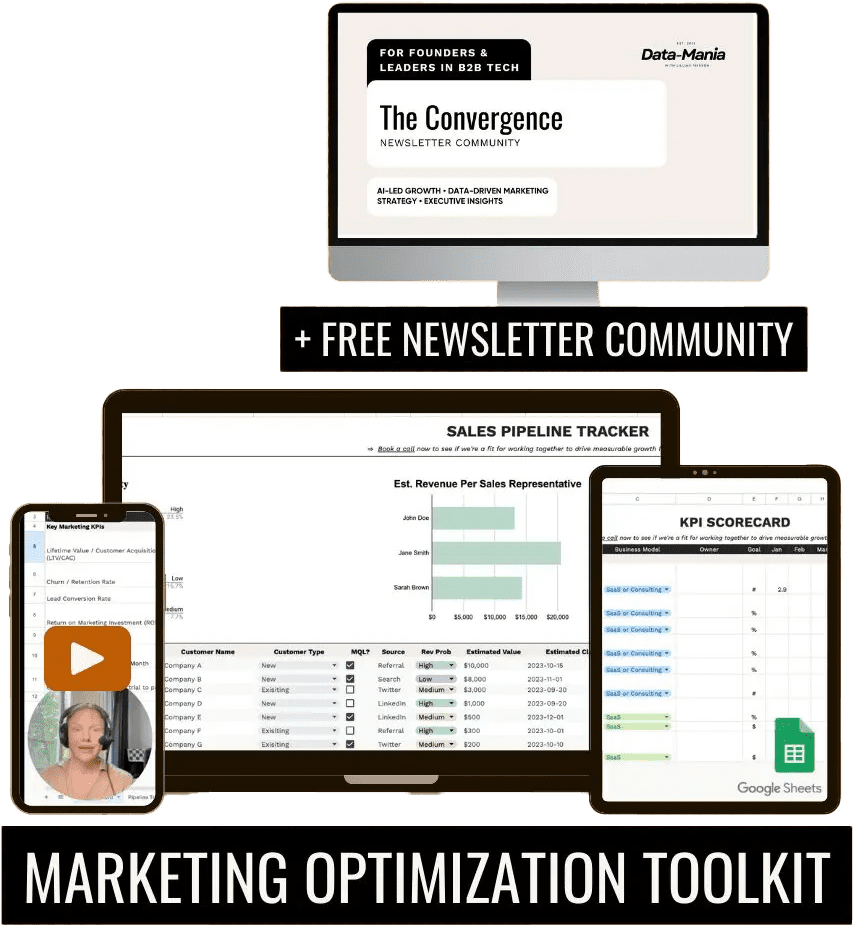The past few years have brought new ways for companies to connect with customers, but email marketing remains a powerful way to engage. Even after the appearance of social media and messaging apps, customers prefer emails to interact with brands. According to the State of Marketing research by Salesforce, the number of outbound emails increased by 15% last year. The volume of sent emails is high because it’s driven by high customer engagement, and now AI in email marketing is helping to increase results. This article discusses how to improve email marketing performance of your business using AI.
AI has already changed this sphere by introducing new tools for personalization, campaign strategies, and automating tasks, but it’s still in the early stages. However, still, there are lots of questions that marketers need to answer. How can we integrate AI into existing strategies? Will our existing email marketing platforms incorporate AI? How AI in email marketing will target our audience?
The Benefits of AI in Email Marketing
So how to improve email marketing performance and what makes AI so great for email marketing? It’s the ability to process massive datasets with speed and precision. Thus, AI is a super-efficient strategist that can analyze customer behavior, predict trends, and customize messages for maximum impact.
Firstly, nowadays, personalization is the most important factor in email marketing. Generic emails are not interesting to consumers anymore as they expect brands to know their preferences, anticipate their needs, and communicate as though they’re speaking directly to them. AI is helping here greatly because it offers text insights and crafts personalized messages.
Moreover, AI improves repetitive tasks like audience segmentation and A/B testing, letting marketers focus on strategy and creativity.
AI-Powered Tools and Technologies for Email Marketing
New wonderful AI-driven marketing tools are appearing every year. Platforms like Mailchimp, HubSpot, and ActiveCampaign are among the front-runners, offering features like advanced segmentation and predictive analytics.
Predictive analytics tools, such as Optimove and Phrasee, take things further by forecasting customer behavior. They allow marketers to plan campaigns that align with their audience. Meanwhile, natural language processing (NLP) tools like Grammarly ensure your email content is grammatically correct and error-free, which helps an email look more professional.
Key Features to Look For in AI Email Tools
When evaluating AI email marketing tools, consider the following features:
- Predictive Analytics: Tools that can predict customer behavior and outcomes.
- Segmentation Capabilities: Advanced options for audience segmentation based on behavioral data.
- Dynamic Content: Tools that allow the creation of personalized, on-the-fly content.
How to Improve Email Marketing Performance: Use AI
The following are some important points on how to improve email marketing performance and how AI can help in achieving this:
Audience Segmentation
Audience segmentation is a marketing strategy based on identifying subgroups within the target audience in order to deliver more tailored messaging and build stronger connections. Audience segmentation plays an important role in successful email campaigns, with AI taking it to a new level. AI can analyze personal, behavioral, and demographic data to create precise audience segments that traditional methods could only dream of achieving.
For example, a retail business uses AI to categorize customers into groups based on purchase frequency, preferred product categories, and browsing habits. This segmentation allows to create and send targeted emails that speak directly to each group’s interests. Companies like Amazon have mastered this, offering personalized product recommendations.
Creating Email Subject Lines
Subject lines are crucial for email campaigns. The largest percentage of people getting emails decide whether to open an email based on the subject line. AI is assisting greatly here with tools like Phrasee and Persado generating great subject lines optimized for open rates.
A/B testing, another critical component of subject line success, is also simplified with AI. Instead of manually testing two options over days, AI tools can analyze multiple variations in real-time, delivering actionable insights faster than ever before.
Personalized Content
Another way on how to improve email marketing performance is creating personalized content. Sending tons of generic emails is not working anymore. AI-powered tools help marketers to create personalized content that adapts to individual preferences. For example, an online bookstore might use AI to recommend book titles based on a user’s browsing history or past purchases.
But it is not all AI can do here, namely AI-based predictive analytics helps to anticipate future customers’ needs. Picture a retailer noticing a customer’s consistent search for winter gear. As the season approaches, AI prioritizes emails showcasing winter essentials, dramatically increasing the likelihood of a purchase.
Automating Email Campaigns
Email automation isn’t new, but AI makes it smarter. Triggered emails like cart abandonment reminders or re-engagement messages are now more effective thanks to real-time behavioral analysis.
AI doesn’t just send emails on autopilot; it learns from performance data and adjusts campaigns on the fly. It adjusts the content, rethinks the timing, or refines the audience targeting to ensure better results. This adaptability ensures campaigns stay relevant and effective, even as market conditions shift.
Email Deliverability
Crafting the perfect email is only half the problem; marketers need to make sure that emails get to the right inbox. Using artificial intelligence helps to ensure that carefully composed messages arrive exactly where they belong. AI improves email deliverability by keeping a keen eye on factors like the sender’s reputation and the nuances that often trigger spam filters. Platforms like SendGrid and Litmus help to get deliverability metrics, offering smart recommendations to improve campaigns.
Integrating AI with Customer Relationship Management
Combining AI with customer relationship management (CRM) platforms unlocks a wealth of possibilities. Systems like Salesforce Einstein provide a 360-degree view of customer interactions, enabling more personalized and efficient campaigns.
For instance, AI can identify upselling opportunities by analyzing CRM data and making sure that emails are both timely and relevant. This integration improves the overall customer experience and drives better results.
Implementing AI in Your Email Marketing Strategy
Now that we’ve explored how to improve email marketing performance and the significant benefits of AI in email marketing, how can you adopt these strategies effectively? Here’s a simple, structured approach to integrating AI into your email campaigns:
Step 1: Audit Your Current Email Strategy
Begin by assessing your existing email marketing strategy. Identify effective elements and areas in need of improvement. Gather data on open rates, click-through rates, and conversion rates to establish a baseline for future performance.
Step 2: Choose the Right AI Tools
Select AI-driven email marketing tools that align with your specific goals. Familiar platforms like Mailchimp, SendGrid, and HubSpot offer robust AI features designed to enhance personalization, automation, and analysis. Do thorough research to find the best fit for your needs.
Step 3: Experiment with Personalization
Once you’ve integrated AI tools, focus on enhancing personalization in your email campaigns. Begin small by tailoring subject lines based on customer segments, then expand into personalized content and product recommendations.
Step 4: Leverage Predictive Analytics
Use AI for predictive analytics to determine the optimal times to send emails. Test different timings to identify patterns that yield the highest engagement, refining your strategy accordingly.
Step 5: Continuous Optimization
Make a habit of A/B testing various elements of your email campaigns. Use insights gathered from AI tools to inform your decisions, allowing for dynamic and ongoing optimization as you learn what resonates most with your audience.
Step 6: Monitor and Adjust
Establish key performance indicators (KPIs) to track your email marketing effectiveness continually. Regularly monitor these metrics, adjusting your strategy based on performance data and customer feedback. Remember, the goal is to foster a cycle of continual improvement.
Conclusion
Including AI in email marketing strategies isn’t just a trend; it’s a necessity nowadays. Thanks to AI’s capabilities, marketers can deliver campaigns that are not only effective but also deeply personalized.
As consumer expectations continue to grow, adopting AI-driven strategies will be crucial for staying competitive. Whether it’s through smarter segmentation, real-time adjustments, or enhanced deliverability, AI offers the tools to elevate email marketing to new heights.
For businesses looking to stay ahead, the message is clear especially on how to improve email marketing performance: embrace AI or risk being left behind. After all, the future of email marketing isn’t just about sending messages – it’s about making every message count.





